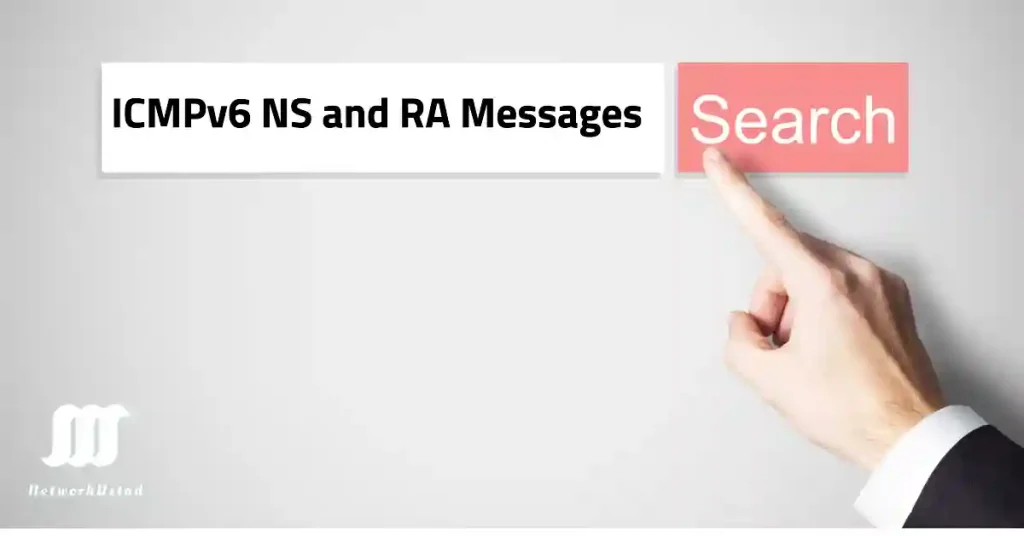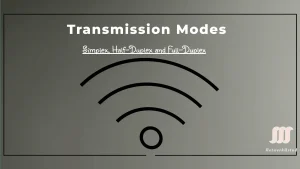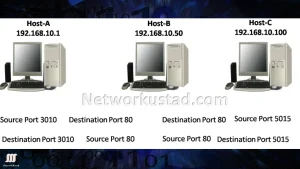The Internet Control Message Protocol (ICMP) is a critical component of the IP suite, used for error reporting, diagnostics, and network management. While ICMPv4 supports IPv4 networks, ICMPv6 is its enhanced counterpart for IPv6, introducing new features like the Neighbor Discovery Protocol (NDP). For CCNA and CCNP students, understanding ICMP is essential for configuring and troubleshooting Cisco networks.
This article explains the differences between ICMPv4 and ICMPv6, focusing on ICMPv6’s advanced features like Router Solicitation (RS), Router Advertisement (RA), Neighbor Solicitation (NS), and Neighbor Advertisement (NA). We’ll also cover practical Cisco configurations, troubleshooting tips, and how these protocols apply to real-world scenarios. At the end of the article simulator is included for all the related commands in the article.
ICMPv4 vs. ICMPv6: Key Differences
ICMPv4 and ICMPv6 serve similar purposes—error reporting and diagnostics—but ICMPv6 introduces enhanced features for IPv6 networks. ICMPv6 messages are encapsulated in IPv6 packets and include the Neighbor Discovery Protocol (NDP), which replaces ARP and adds new functionalities like Stateless Address Autoconfiguration (SLAAC).
Comparison of ICMPv4 and ICMPv6
| Feature | ICMPv4 | ICMPv6 |
|---|---|---|
| IP Version | IPv4 | IPv6 |
| Message Encapsulation | Encapsulated in IPv4 packets | Encapsulated in IPv6 packets |
| Address Resolution | Uses ARP | Uses NDP (NS/NA messages) |
| Autoconfiguration | Not supported | Supports SLAAC via RA messages |
| Key Message Types | Echo Request/Reply, Destination Unreachable | Echo Request/Reply, RS, RA, NS, NA |
| Multicast Support | Limited (e.g., IGMP) | Extensive (e.g., FF02::2 for routers) |
ICMPv6’s NDP includes four key protocols: Router Solicitation (RS), Router Advertisement (RA), Neighbor Solicitation (NS), and Neighbor Advertisement (NA). These are explained in detail below.
Router Solicitation (RS) Message
Router Solicitation (RS) messages are sent by IPv6 hosts to prompt routers to send Router Advertisement (RA) messages immediately, rather than waiting for periodic RA broadcasts. This is critical for Stateless Address Autoconfiguration (SLAAC), where hosts dynamically obtain IPv6 addresses.
- Purpose: Requests network configuration details (e.g., prefix, default gateway).
- Destination: Sent to the all-routers multicast address (FF02::2).
- ICMPv6 Type: 133.
- When Sent: At system startup or when a host needs an updated configuration.
Cisco Configuration Example
To enable a Cisco router to respond to RS messages, configure IPv6 on an interface:
Router(config)# interface GigabitEthernet0/0
Router(config-if)# ipv6 address 2001:db8::1/64
Router(config-if)# ipv6 nd ra interval 200
Router(config-if)# no ipv6 nd suppress-ra
This configuration sets the RA interval to 200 seconds and ensures RA messages are sent in response to RS messages.
Router Advertisement (RA) message
Router Advertisement (RA) messages are sent by IPv6 routers to provide hosts with configuration information for SLAAC. RA messages are sent periodically or in response to RS messages.
- Purpose: Provides prefix, prefix length, default gateway, DNS server, MTU, hop limit, and timers for neighbor discovery.
- Destination: Sent to the all-nodes multicast address (FF02::1).
- ICMPv6 Type: 134.
- Key Flags:
- Managed Address Configuration (M): Indicates DHCPv6 for address assignment.
- Other Configuration (O): Indicates DHCPv6 for other settings (e.g., DNS).
Cisco Configuration Example
To configure RA messages on a Cisco router:
Router(config)# interface GigabitEthernet0/0
Router(config-if)# ipv6 address 2001:db8::1/64
Router(config-if)# ipv6 nd prefix 2001:db8::/64
Router(config-if)# ipv6(nd ra dns server 2001:db8::53Troubleshooting Tip
Use the command show ipv6 routers on a Cisco device to verify received RA messages.
Neighbor Solicitation (NS) and Neighbor Advertisement (NA) Messages
ICMPv6 Neighbor Solicitation (NS) and Neighbor Advertisement (NA) messages are part of the Neighbor Discovery Protocol (NDP), replacing ARP in IPv4. They serve two main purposes: address resolution and Duplicate Address Detection (DAD).
Address Resolution
When the device knows the destination IPv6 unicast address on the same link but does not know the destination device’s MAC address, the Address Resolution is used to know its MAC address, similarly to an ARP Request for IPv4. To resolve the destination’s MAC address, the device will send an NS message to the solicited-node address. The message will contain the destination IPv6 unicast address. The destination device will respond with an NA message containing its Ethernet MAC address. The NS message includes:
- ICMPv6 Type: 135.
- Target Address: The IPv6 address to resolve.
The destination device responds with an NA message (ICMPv6 Type 136) containing its MAC address.
Duplicate Address Detection (DAD)
IPv4 nodes use gratuitous ARP to detect a duplicate unicast IPv4 address on the local link. Similarly, IPv6 nodes use Neighbor Solicitation messages (NS message) to identify the uniqueness of an address on the local link in a process known as Duplicate Address Detection (DAD). The device will send an NS message with its IPv6 address as the targeted IPv6 address. If another device on the network has this address, it will respond with an NA message. This NA message will notify the sending device that the address is in use. If a corresponding NA message is not returned within a certain period, the unicast address is unique and acceptable.
DAD ensures an IPv6 address is unique on the local link. The process:
- A device sends an NS message with its tentative IPv6 address as the target.
- If another device uses the address, it responds with an NA message.
- If no NA is received within a timeout period, the address is unique.
Cisco Verification
To check neighbor entries on a Cisco device:
Router# show ipv6 neighbors
This displays the IPv6 address, MAC address, and interface of discovered neighbors.
Troubleshooting and Security Considerations
Troubleshooting ICMPv6
Use these Cisco commands to troubleshoot ICMPv6 issues:
- Verify RA messages:
show ipv6 routers - Check neighbor cache:
show ipv6 neighbors - Debug NDP:
debug ipv6 nd
Example:
Router# debug ipv6 nd
ICMPv6-ND: Received RA from 2001:db8::1 on GigabitEthernet0/0
Security Considerations
RA Spoofing: Malicious devices can send fake RA messages to disrupt SLAAC. Use RA Guard on Cisco switches:
Switch(config)# ipv6 nd raguard policy RAGUARDSwitch(config-nd-raguard)# device-role router Switch(config)# interface GigabitEthernet0/1 Switch(config-if)# ipv6 nd raguard
DAD Attacks: Attackers can claim addresses during DAD. Enable Secure Neighbor Discovery (SEND) where supported.
ICMPv4/ICMPv6 Network Simulator
Do not use the short form of the command; use the full form, because the short form of the command is not added to the simulator. The simulator will only work for commands in this article or some basic commands.
Router>
Type commands or use the configuration panel to begin.
Supported commands: debug ipv6 nd, show ipv6 neighbors, show ipv6 routers, etc.
ICMPv6 Configuration Examples
Enable IPv6 on an Interface
Router> enable Router# configure terminal Router(config)# interface GigabitEthernet0/0 Router(config-if)# ipv6 enable Router(config-if)# ipv6 address 2001:db8::1/64
Configure Router Advertisements
Router(config-if)# ipv6 nd ra interval 200 Router(config-if)# no ipv6 nd suppress-ra Router(config-if)# ipv6 nd prefix 2001:db8::/64
Configure RA Guard
Switch(config)# ipv6 nd raguard policy RAGUARD Switch(config-nd-raguard)# device-role router Switch(config)# interface GigabitEthernet0/1 Switch(config-if)# ipv6 nd raguard attach-policy RAGUARD
Troubleshooting Commands
View Neighbor Cache
Router# show ipv6 neighbors
Displays IPv6 to MAC address mappings.
View Received RA Messages
Router# show ipv6 routers
Shows Router Advertisement information.
Debug Neighbor Discovery
Router# debug ipv6 nd
Real-time debugging of NDP messages.
IPv6 Ping Test
Router# ping ipv6 2001:db8::1
Test IPv6 connectivity.
ICMPv6 Message Types
Router Solicitation (RS) – Type 133
Sent by hosts to request RA messages immediately.
Destination: FF02::2 (all-routers)
Router Advertisement (RA) – Type 134
Sent by routers to provide network configuration.
Destination: FF02::1 (all-nodes)
Neighbor Solicitation (NS) – Type 135
Used for address resolution and DAD.
Replaces ARP from IPv4.
Neighbor Advertisement (NA) – Type 136
Response to NS messages with MAC address.
FAQs
What is the main difference between ICMPv4 and ICMPv6?
ICMPv4 supports IPv4 networks, while ICMPv6 supports IPv6 and includes Neighbor Discovery Protocol (NDP) for address resolution and autoconfiguration.
How does SLAAC work with ICMPv6?
Stateless Address Autoconfiguration (SLAAC) uses Router Advertisement (RA) messages to provide hosts with IPv6 prefixes and configuration details without a DHCP server.
What is the purpose of Neighbor Solicitation (NS) messages?
NS messages are used for address resolution (similar to ARP) and Duplicate Address Detection (DAD) to ensure unique IPv6 addresses on a link.
How can I verify ICMPv6 neighbors on a Cisco router?
Use the command show ipv6 neighbors to display the IPv6 address, MAC address, and interface of discovered neighbors.
What is the all-routers multicast address in IPv6?
The all-routers multicast address is FF02::2, used by hosts to send Router Solicitation (RS) messages.
How do I prevent RA spoofing on a Cisco switch?
Configure RA Guard using commands like ipv6 nd raguard policy and apply it to interfaces to filter unauthorized RA messages.





